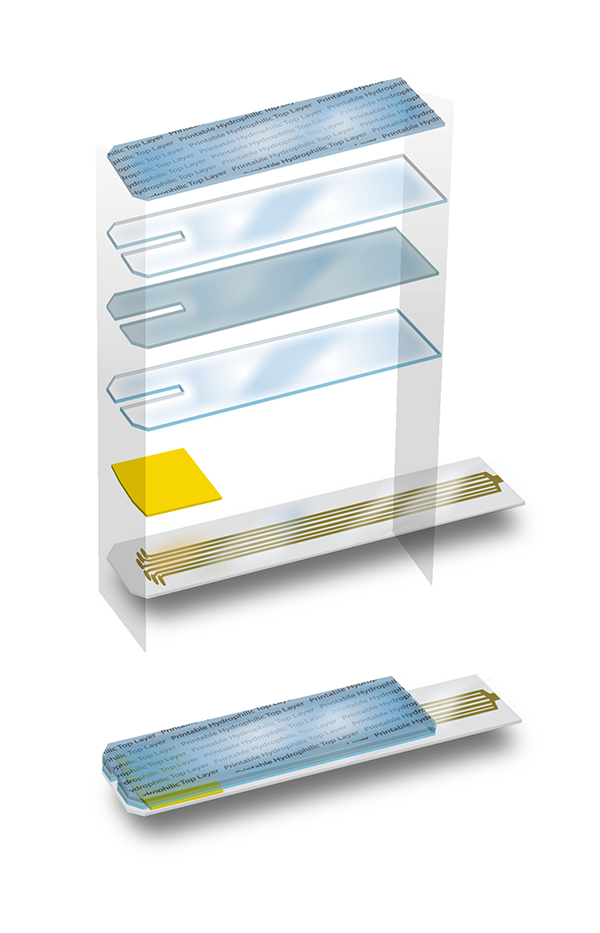Microfluidics is the science of moving microscopic volumes of fluids through tiny channels in a device. Microfluidics technology is used in the construction of blood glucose strips, lab-on-a-disc and lab-on-a-chip applications, and other diagnostic consumables and devices. The applications for devices using microfluidics are varied with examples such as pathogen detection, chronic disease monitoring, cancer screening, genetic biomarker detection, food and environmental monitoring.
As diagnostic science develops and evolves, microfluidic devices can measure and analyze a small biologic sample in minutes, instead of days or weeks. Patients and their caregivers benefit through the accuracy and ease of use of point-of-care and other lab-on-a-chip devices, enabling them to make decisions in managing their chronic disease from home instead of at the physician’s office, which may help improve their quality of life.
Many complexities emerge when it comes to integration of multiple technologies to form microfluidic devices that may be fabricated into high volume diagnostic consumables. It is critical that the materials used in their construction deliver consistent and reliable performance.
The ability to consider material and precision fabrication properties, while additionally leveraging sensing and chemical know-how are just the beginning to moving microscopic amounts of fluid through tiny channels. A typical strip design is the use of a transparent hydrophilic top film designed to wick or promote movement of the sample blood drop into a capillary test chamber. The test strip chamber is likely formed via lamination of one or more “spacer” layers that have been processed via a notch-cutting operation to form a channel. The bottom layer is usually a reagent pad deposited onto a conductive layer that contains circuitry to allow electrochemical measurements. Depending on the end-use application, a variety of materials can be used, including polymer-based thermoplastics, elastomers, paper-based membranes and plastic materials.
Although surface energy is an important factor in determining wettability for a liquid, the surface energy of materials also plays a critical role in bonding materials together with adhesives or when applying a coating to a surface. High energy, highly wetting surfaces are generally easier to attach reagents, enzymes, inks, and conductive materials compared to low energy surfaces.1 When creating a fluid channel with adhesives, using methods such as by bonding multiple structured layers, a high-energy surface usually helps to adhere fast, stay in place and form a tight seal.
Microfluidic device design engineers can help people make important healthcare decisions. When creating lifesaving technology, material selection is important. Understanding how selected materials may impact the device is a key factor for when planning for success.
Reference
- A.K. Au, W. Huynh, L.F. Horowitz, A. Folch, Angew. Chem. Int. Ed (2016), 55, 3862; Angew. Chem. Int. Ed (2016), 128, 3926.







